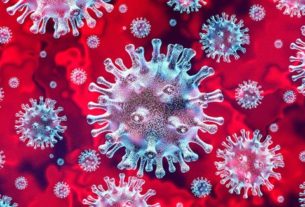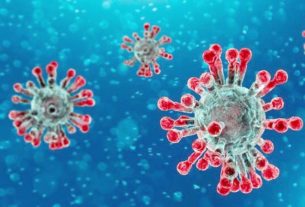From Our Bureau
5TH AUGUST 2020
The Corona Virus (COVID-19) pandemic situation remained grim globally, with the confirmed cases across the world soaring to 1,83,54,342 and the death toll rising to 6,96,147 in the 216 affected countries and territories, according to the latest update from the World Health Organization (WHO).
Globally, American region continued to be the worst-hit with 98,41,842 confirmed cases and 3,67,934 deaths. Europe came next with 34,51,556 confirmed cases and 2,14,731 deaths. South-East Asia region’s tally stood at 22,99,433 confirmed cases and 48,569 deaths.
Eastern Mediterranean region reported 15,85,458 confirmed cases and 41,601 deaths. African region registered 8,34,147 confirmed cases and 14,750 deaths. Western Pacific region recorded 3,41,165 confirmed cases and 8,549 deaths. WHO Risk Assessment at global level remained very high.
WHO Regional Director for the
Americas, Dr Carissa Etienne, has warned of disruptions to regular health
services due to COVID-19. Health workers have been redirected to care for
COVID-19 patients, people are hesitating to seek routine care due to fears of
infection, and global supply chains of medicines and equipment are strained.
This week, the world celebrates
Breastfeeding Awareness Week to highlight the importance of breastfeeding. WHO
recommendations on the initiation and continued breastfeeding of infants and
young children also apply to mothers with suspected or confirmed COVID-19.
As WHO Director-General Dr Tedros mentioned in yesterday’s press briefing, ‘the many, many benefits of breastfeeding for newborn babies and children substantially outweigh the potential risks for COVID-19 infection.’
The WHO Regional Office for Europe has released an article on Marko Obradovic, a paediatric nurse in Serbia, who describes the challenges and importance of encouraging breastfeeding.
WHO has been supporting Suriname to address the COVID-19 pandemic and has assisted in strengthening Suriname’s health system and through the Universal Health Coverage Partnership, with the goal of helping the country achieve universal health coverage.
Today, WHO has released a report which provides a summary of the age and sex distribution of confirmed COVID-19 cases from WHO COVID-19 global surveillance database from January to July 2020.
Subject in Focus: WHO global surveillance for human infection with coronavirus disease (COVID-19): Analysis of age and sex data as of 30th July 2020
Following the notification of the first COVID-19 cases in China in early January, WHO set up a global surveillance system to gather essential information to monitor the pandemic. Members States (MS) were requested to report daily count of confirmed cases and deaths, in addition to reporting a minimal set of information via a case based reporting system using a case reporting form (CRF) or via the weekly aggregated surveillance system.
As of 30th July, 133 countries, territories and areas have reported CRF data and 54 countries, territories and areas have reported weekly aggregate numbers.
A total of 1,62,98,556 confirmed cases had been reported globally. WHO received information for 84,83,026 (52 percent) confirmed cases: 52,20,697 through CRF and 32,62,329 through weekly aggregate surveillance.
Of 84,83,026 confirmed cases received via CRF and weekly aggregate surveillance, 59,11,819 (70 percent) provided information on sex and 64,51,652 (76 percent) provided information on age. Among the information received on sex, fifty-three percent (31,29,345) were males and 47 per cent (27,82,474) were females.
The majority (64 percent) of cases were between the age of 25 to 64 years. From 24th February through 12th July 2020 (epidemiological weeks 9 to 28), the proportion of cases aged 0-4 years, 5-24 years and 25-64 years have increased by seven-fold, six-fold and three-fold, respectively.
This trend may be explained by, but is not limited to, the following factors: Early detection and testing were initially focused on identifying cases with severe symptoms, which are more frequently observed among older people; Changes to case definitions and general awareness are now leading to detection of more mild cases, many of whom tend to be younger; expanded availability of testing with numerous drive-through testing, which likely enables increased testing in communities; outbreak hotspots shifting over time to countries with lower age profiles (e.g. developing countries, or countries with substantial ex-patriate dormitory populations); risky behavior after easing of public health and social measures implemented to reduce the spread of the virus, which may have increased transmission among younger population.
Age distribution of confirmed COVID-19 cases as per COVID-19 WHO surveillance database, January to July 2020 is as follows: Age groups 0-4 years: 1.2 percent cases; 5-14 years: 2.5 percent; 15-24 years: 9.6 percent; 25-64 years: 64 percent; 65-84 years: 19.4 percent and 85+years: 3.4 percent. (eom)



